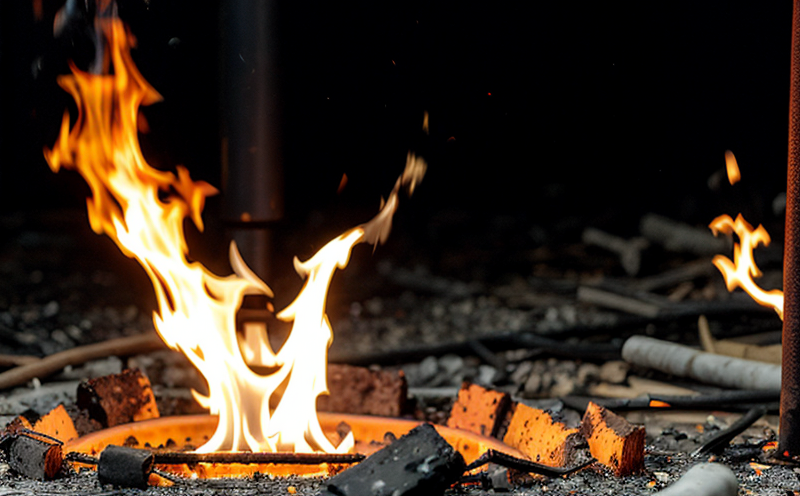EN 71-2 Paper and Cardboard Toy Flammability Test
The EN 71 series of European standards is widely recognized for setting stringent safety requirements for toys, including flammability testing. Specifically, EN 71-2:2019+A1:2022 addresses the flammability of paper and cardboard materials used in toy manufacturing. This standard aims to ensure that these materials do not pose a fire hazard or contribute significantly to fires when exposed to ignition sources.
The testing procedure outlined in EN 71-2 is designed to simulate real-world scenarios where toys might come into contact with heat sources, such as clothing, furniture, or other combustible materials. The test evaluates the rate at which paper and cardboard materials ignite and burn, thereby determining their resistance to ignition by a specified flame.
This service involves rigorous testing processes that ensure compliance with regulatory requirements. It is critical for toy manufacturers to pass this test because it directly impacts product safety and market accessibility in Europe and beyond. Non-compliance can lead to product recalls, legal penalties, and reputational damage.
The scope of EN 71-2 covers various types of paper and cardboard materials commonly used in the production of toys, including:
- Uncoated papers
- Coated papers
- Cardboards
- Folded or laminated materials
The testing procedure for EN 71-2 involves several key steps:
- Sample Preparation: The samples must be cut into standard sizes and shapes. These are typically rectangular pieces that represent the largest area of paper or cardboard in contact with a child.
- Test Setup: Samples are placed on a specially designed test frame which holds them at an angle to simulate real-world conditions. The test frame is then exposed to an open flame for a specified duration.
- Data Collection: Observers record the time taken for ignition and subsequent burning, as well as any other relevant parameters such as flame spread rate and char depth.
The results of this testing are critical in ensuring that paper and cardboard materials used in toys meet safety standards. Compliance with EN 71-2 is a prerequisite for toy manufacturers looking to sell their products in the European market, making it an essential service for quality managers, compliance officers, R&D engineers, and procurement teams.
The following tables provide details on the applied standards:
| Standard | Description |
|---|---|
| EN 71-2:2019+A1:2022 | Flammability test for paper and cardboard toys |
| ASTM F963-18a | Safety of toys (complementary standard) |
| Test Parameters | Description |
|---|---|
| Flame duration | The time the flame is applied to the sample. |
| Ignition temperature | The minimum temperature at which a material begins to burn spontaneously. |
| Burning rate | The speed at which the flame spreads across the sample. |
In summary, EN 71-2 testing is crucial for ensuring toy safety. Compliance with this standard not only protects children from potential hazards but also helps manufacturers maintain a competitive edge by avoiding costly recalls and legal issues.
Applied Standards
| Standard | Description |
|---|---|
| EN 71-2:2019+A1:2022 | Flammability test for paper and cardboard toys |
| ASTM F963-18a | Safety of toys (complementary standard) |
| IEC 62197:2005 | Electrical safety for children’s articles |
| EN 71-3:2012 | Lacquers and varnishes used in toys |
The standards mentioned are critical to the testing process. EN 71-2 specifically targets flammability, while ASTM F963 covers a broader range of safety aspects for toys. IEC 62197 focuses on electrical safety, ensuring that electronic components in toys do not pose risks from overheating or short-circuiting. Lastly, EN 71-3 addresses lacquers and varnishes used in toy manufacturing, which must be non-toxic and safe for children.
Quality and Reliability Assurance
The quality and reliability of the EN 71-2 testing process are paramount to ensuring accurate results. Our laboratory adheres strictly to the procedures outlined in the standard, using state-of-the-art equipment calibrated periodically to ensure precision. This includes:
- Flame applicators with precise timing mechanisms
- Thermocouples for measuring temperature accurately
- Digital cameras for capturing burning behavior
- Data logging systems for continuous monitoring
The laboratory employs trained professionals who are familiar with the nuances of EN 71-2 testing. They undergo regular training to stay updated on any changes or updates to the standard, ensuring that all tests conducted are up-to-date and compliant.
Our rigorous quality assurance protocols include:
- Calibration checks: All equipment is calibrated before each test run.
- Data validation: Results from multiple tests are cross-verified to ensure consistency.
- Review and audit: Test results undergo internal audits by senior staff members.
The reliability of the testing process is further enhanced through our certification with recognized bodies such as ISO/IEC 17025. This ensures that we meet the highest standards for technical competence, quality assurance, and impartiality in testing services.
Competitive Advantage and Market Impact
Compliance with EN 71-2 offers several strategic advantages to toy manufacturers:
- Market Access: Ensures toys are legally compliant in the European market.
- Reputation: Enhances brand reputation by demonstrating a commitment to safety and quality.
- Consumer Trust: Builds trust with parents and guardians who prioritize toy safety for their children.
- Competitive Edge: Differentiates products from those that do not meet the stringent requirements of EN 71-2.
In a highly competitive market, compliance can be a deciding factor in gaining consumer trust. Non-compliance, on the other hand, could result in product recalls and damage to brand reputation. Our service ensures that toy manufacturers can confidently demonstrate their commitment to safety and quality, thereby maintaining a strong competitive position.





